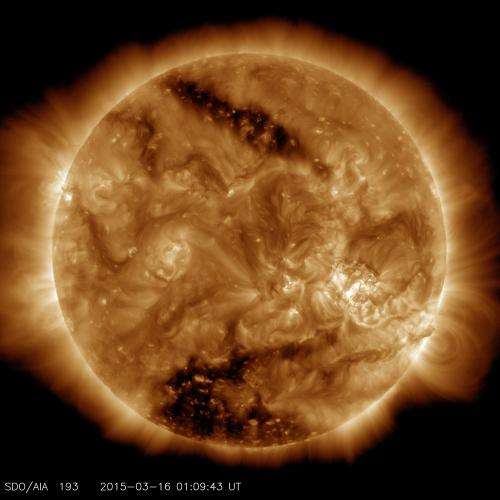NASA's SDO sees two coronal holes

NASA's Solar Dynamics Observatory, or SDO, captured this solar image on March 16, 2015, which clearly shows two dark patches, known as coronal holes. The larger coronal hole of the two, near the southern pole, covers an estimated 6- to 8-percent of the total solar surface. While that may not sound significant, it is one of the largest polar holes scientists have observed in decades. The smaller coronal hole, towards the opposite pole, is long and narrow. It covers about 3.8 billion square miles on the sun - only about 0.16-percent of the solar surface.
Coronal holes are lower density and temperature regions of the sun's outer atmosphere, known as the corona. Coronal holes can be a source of fast solar wind of solar particles that envelop the Earth.
The magnetic field in these regions extends far out into space rather than quickly looping back into the sun's surface. Magnetic fields that loop up and back down to the surface can be seen as arcs in non-coronal hole regions of the image, including over the lower right horizon.
The bright active region on the lower right quadrant is the same region that produced solar flares last week.
Provided by NASA





















